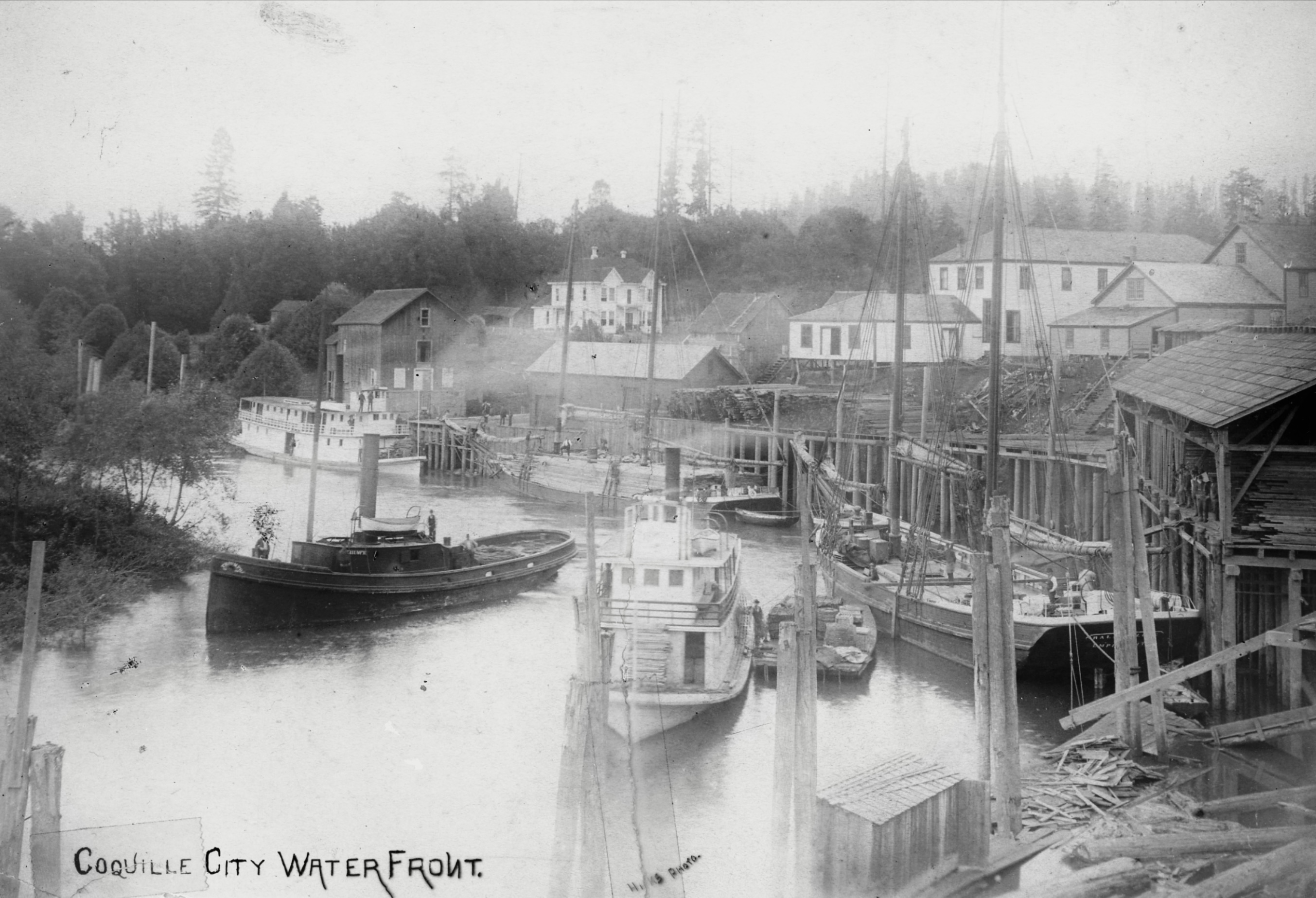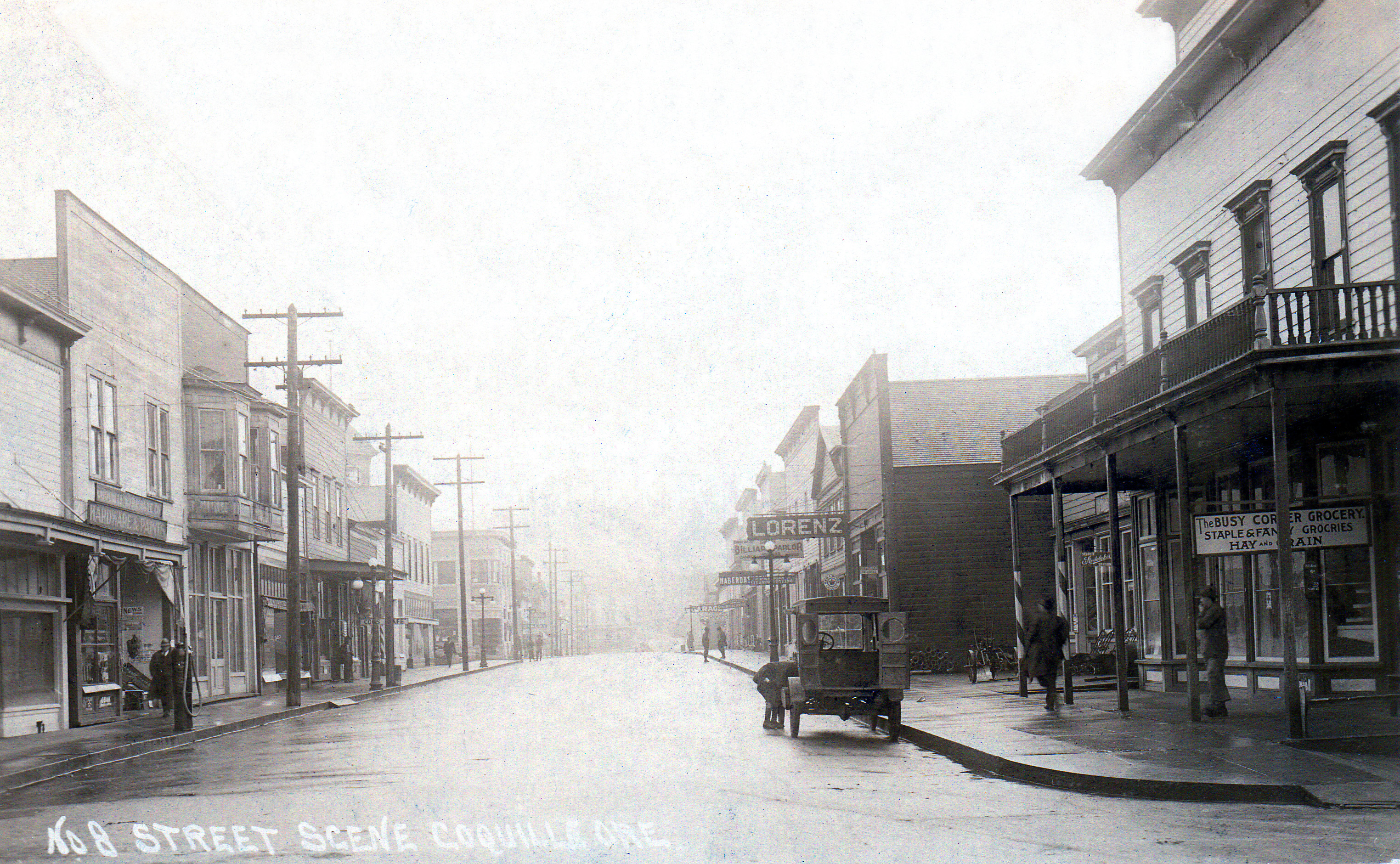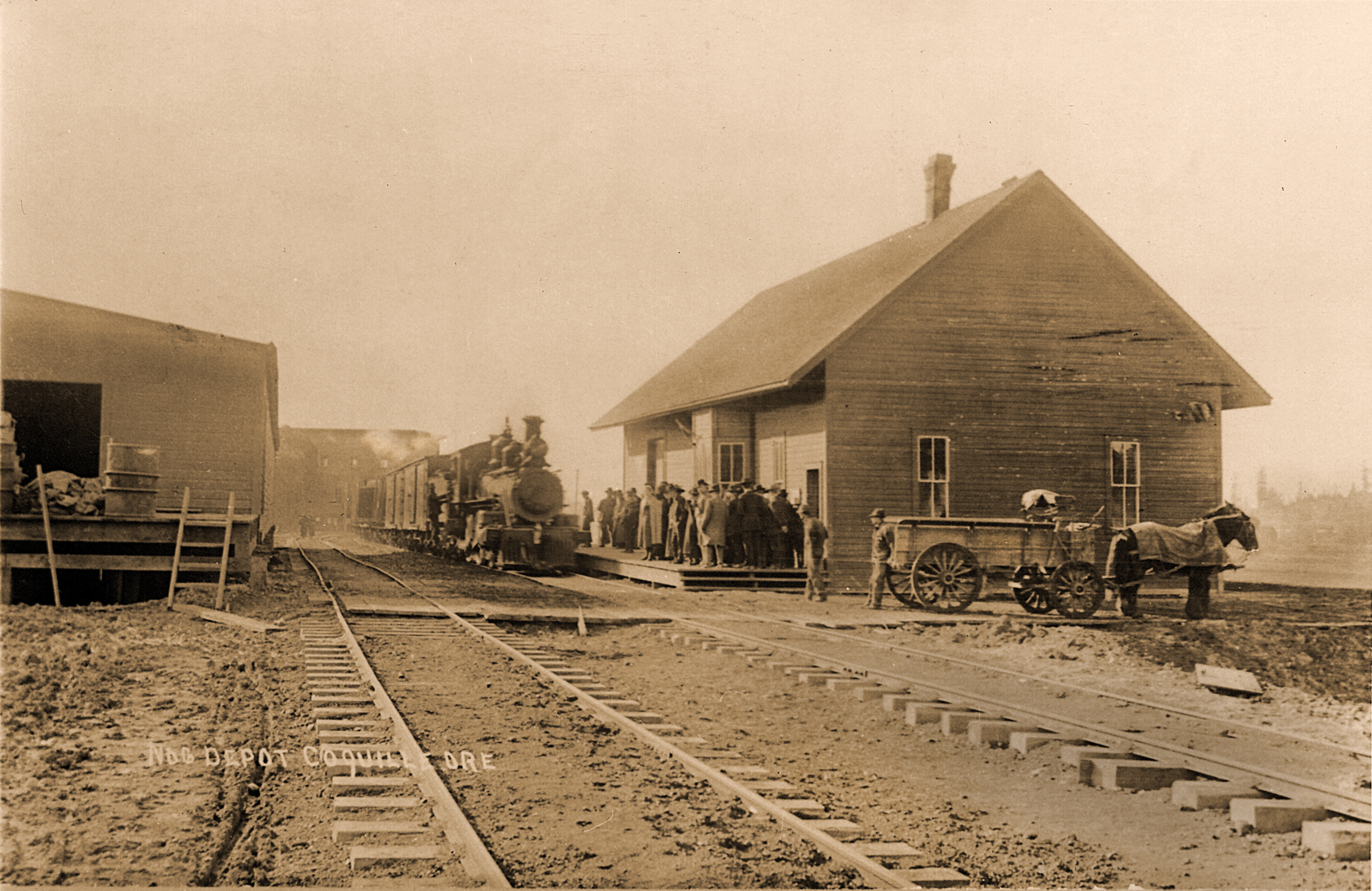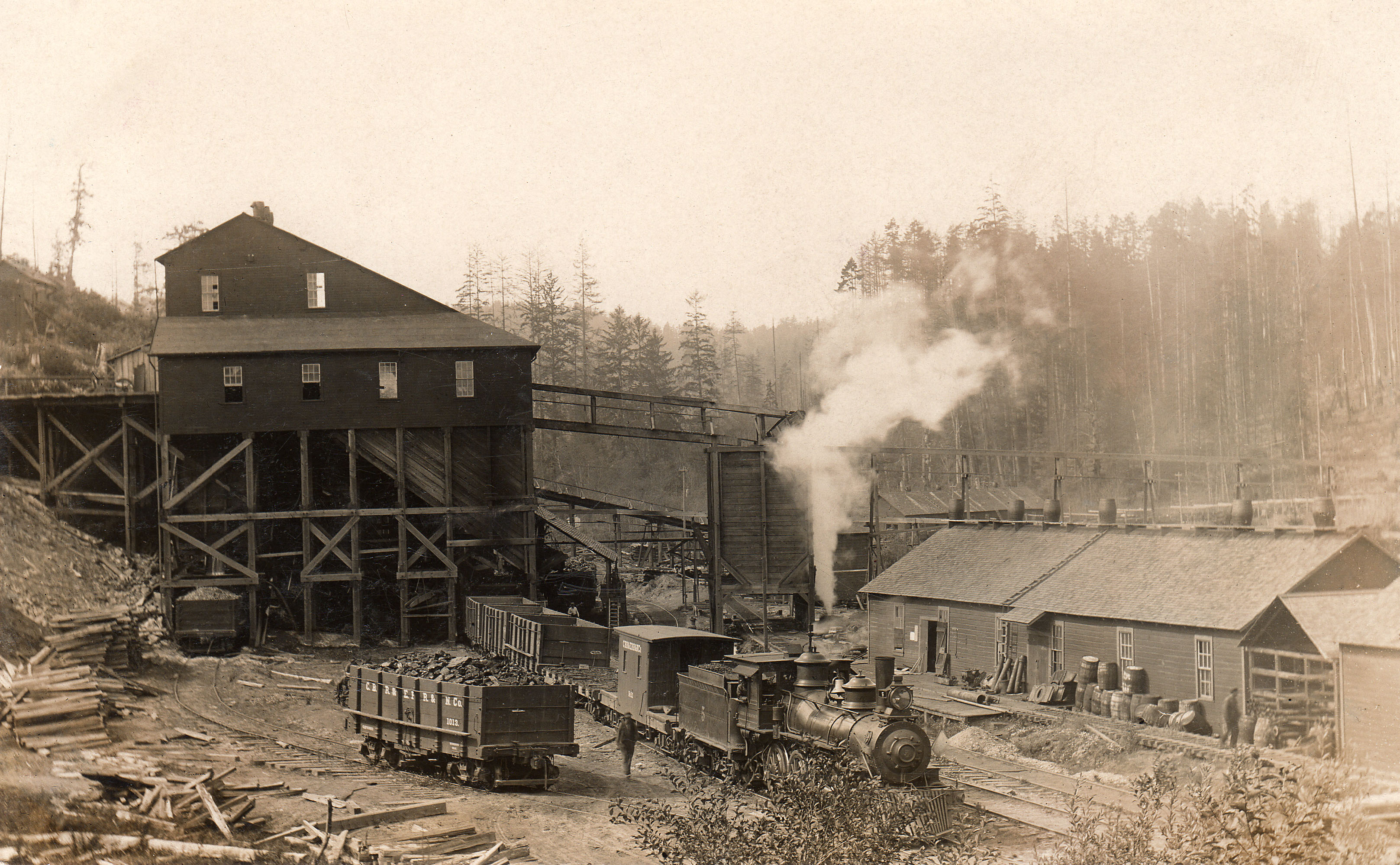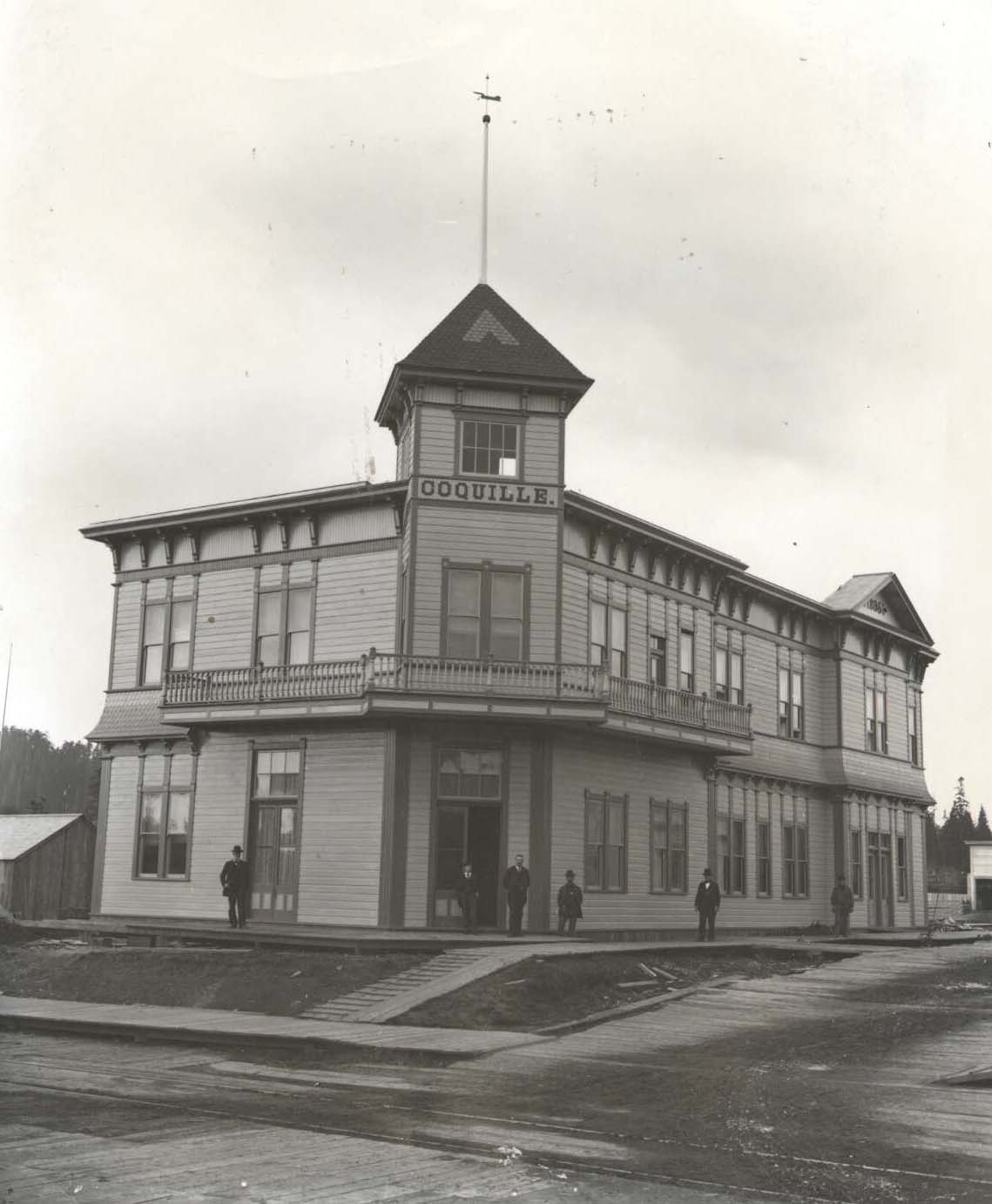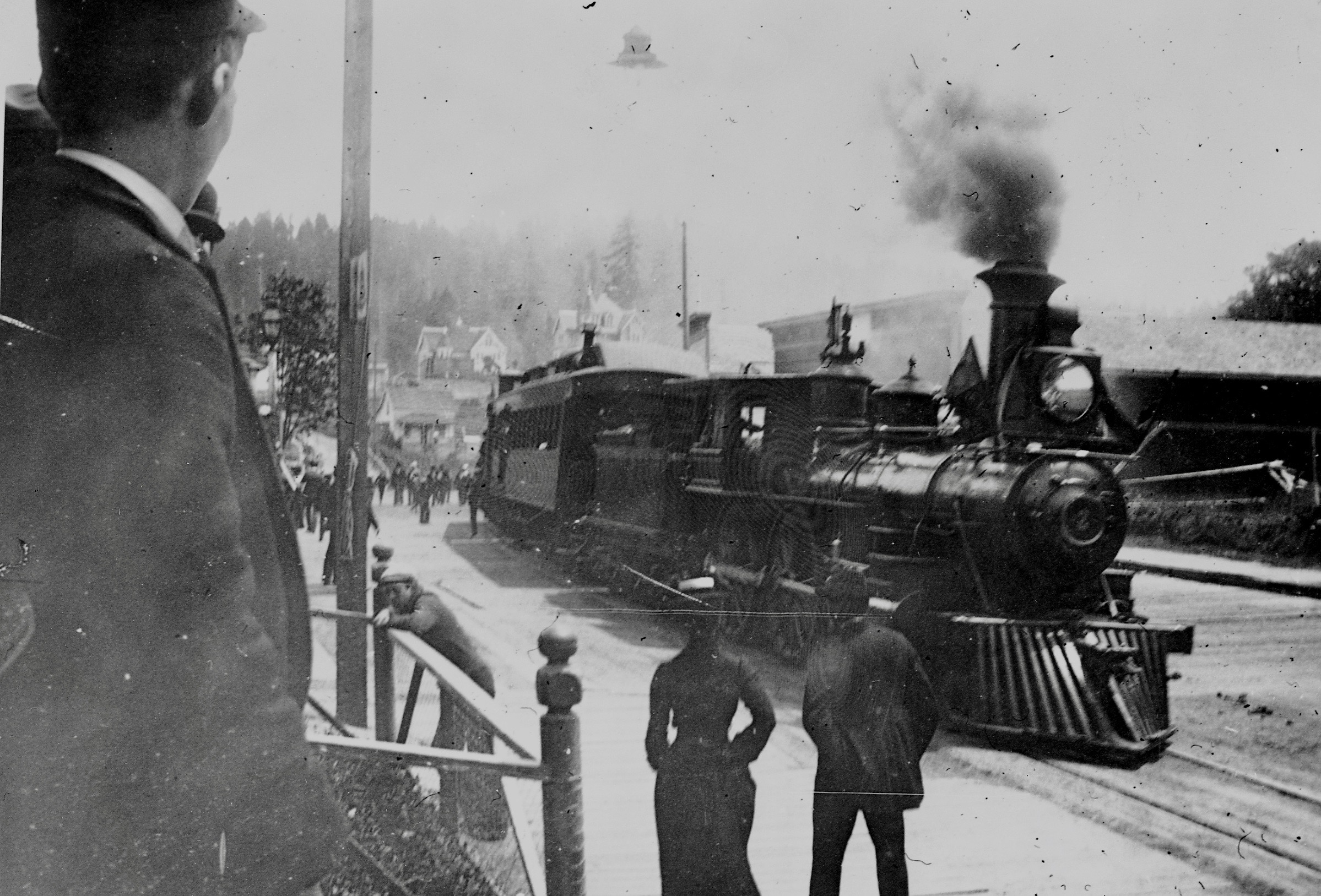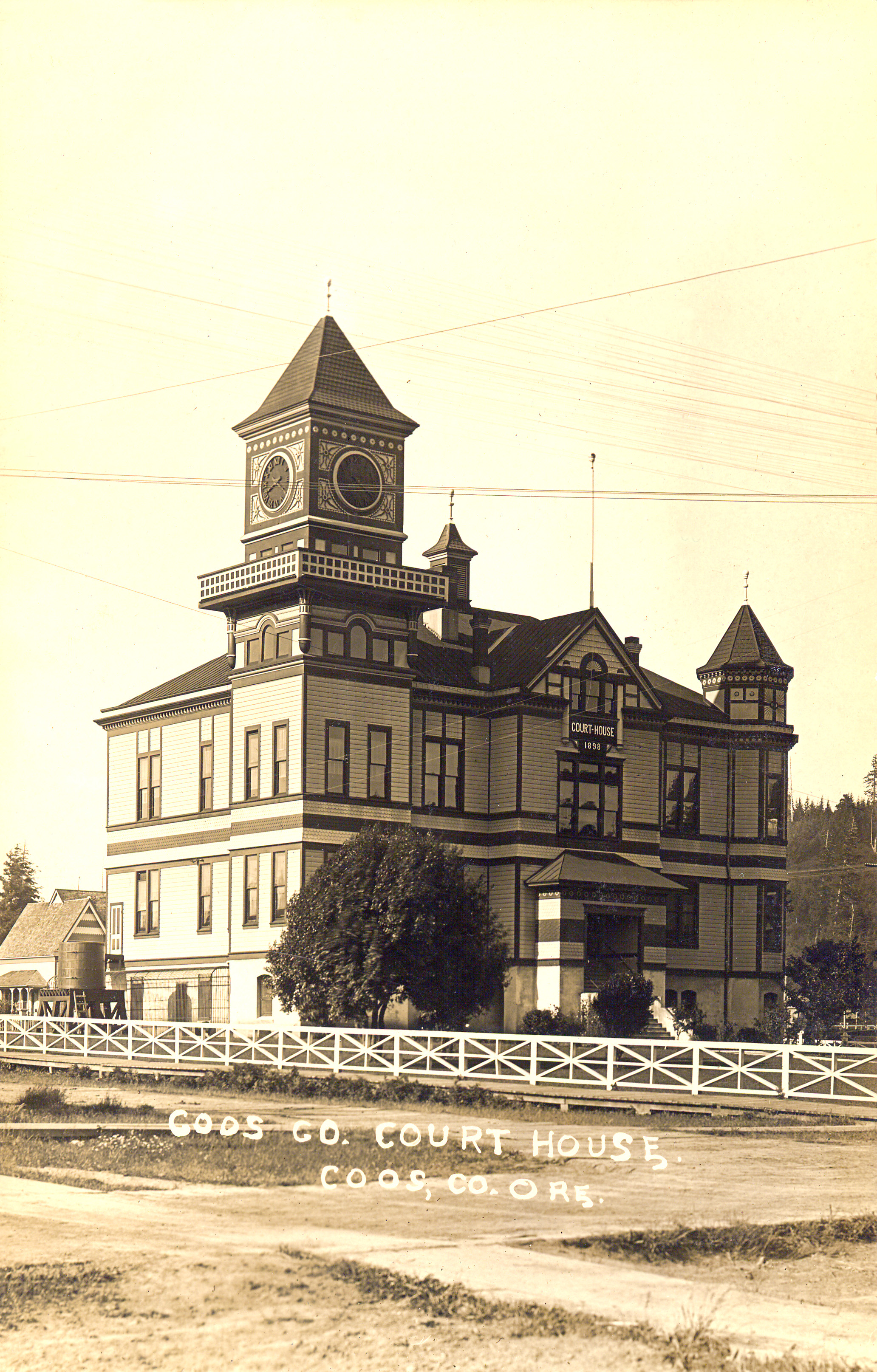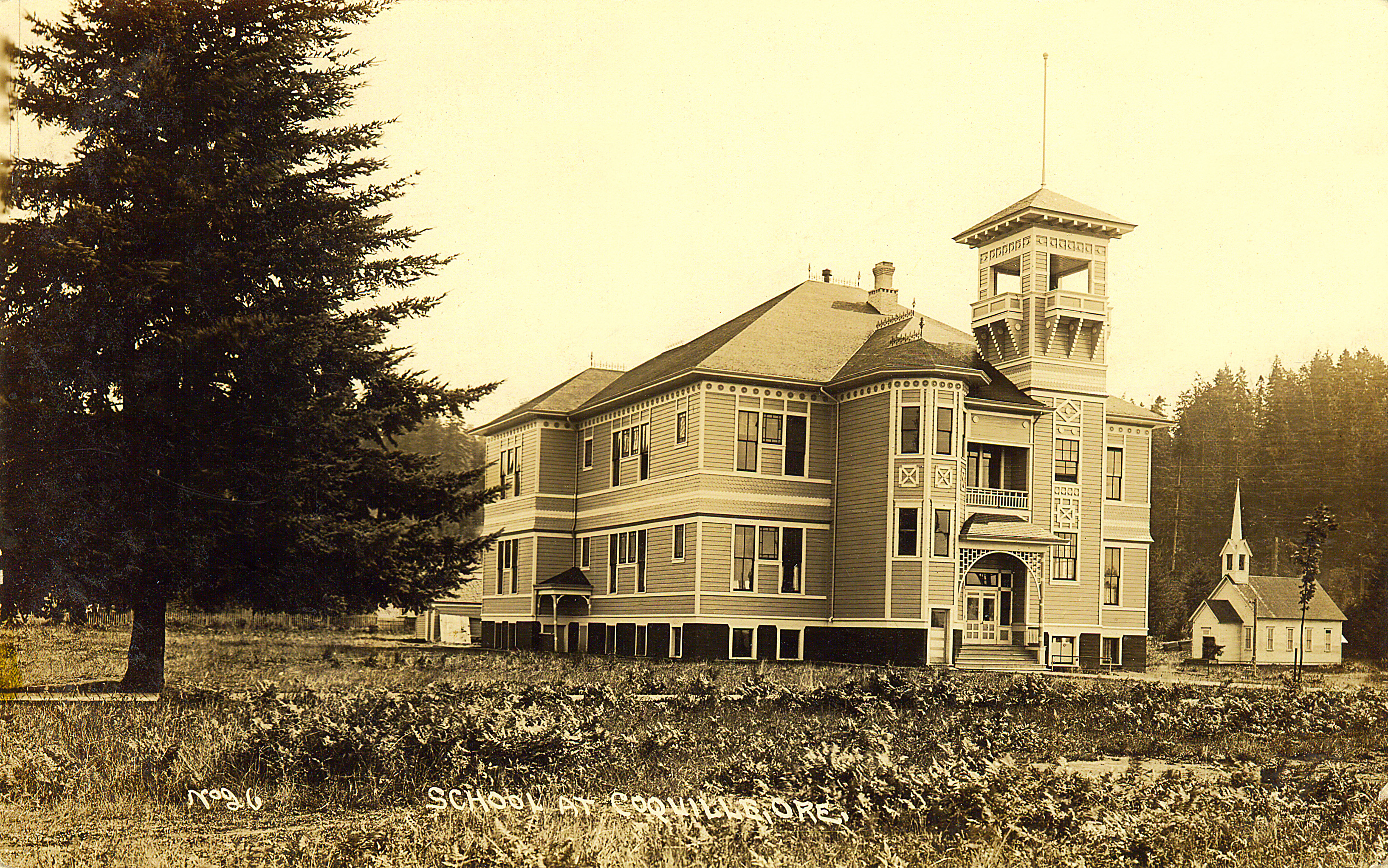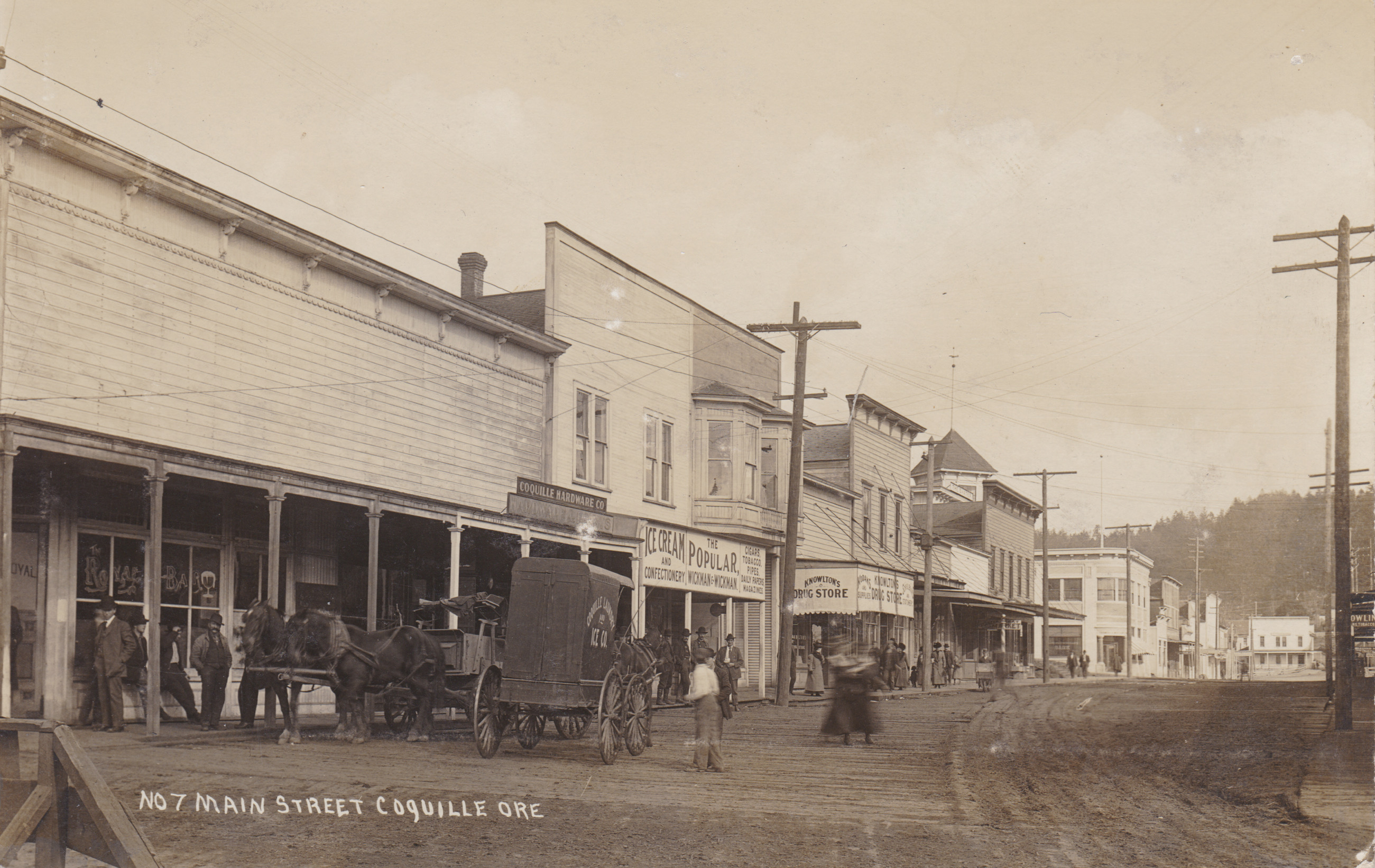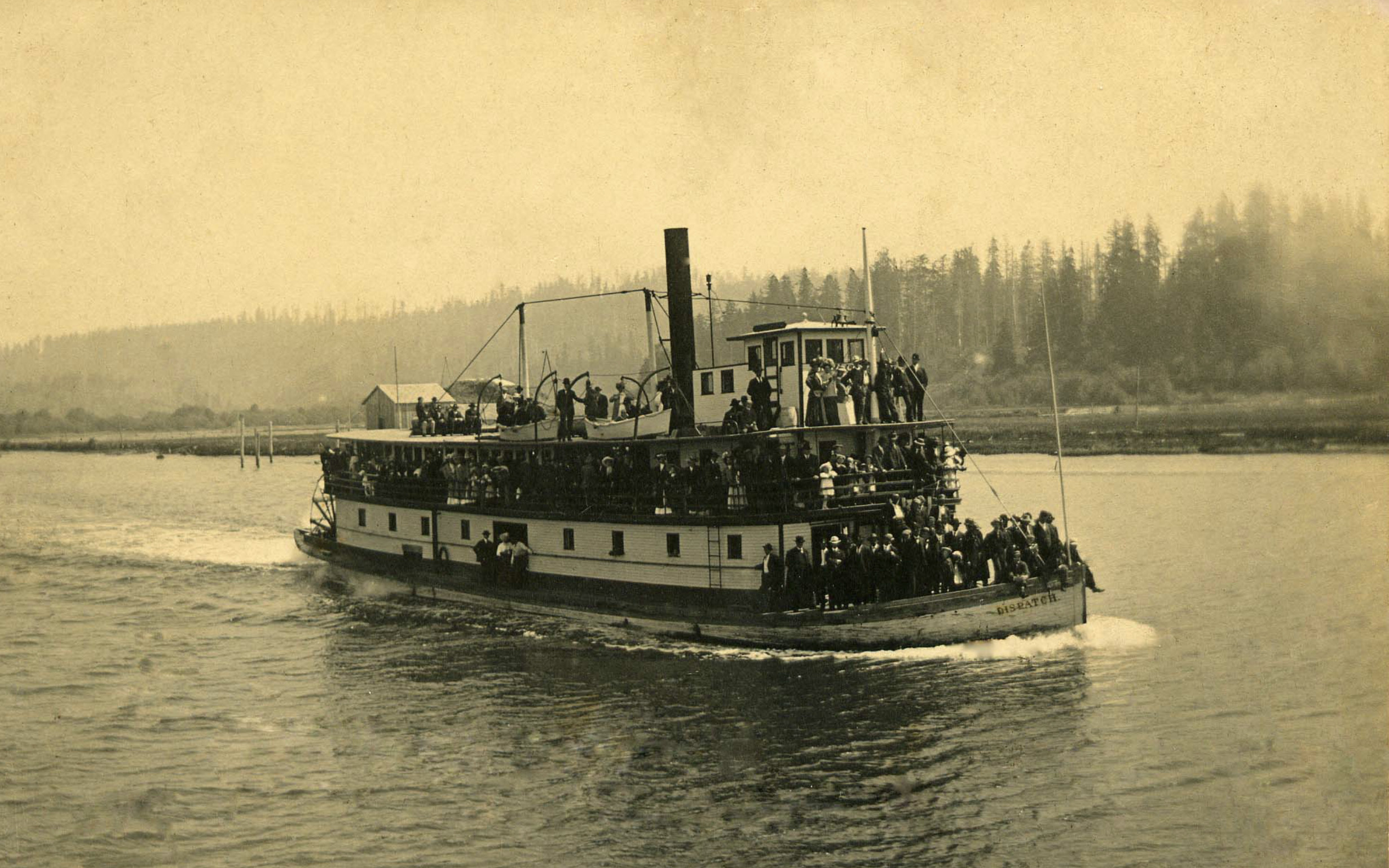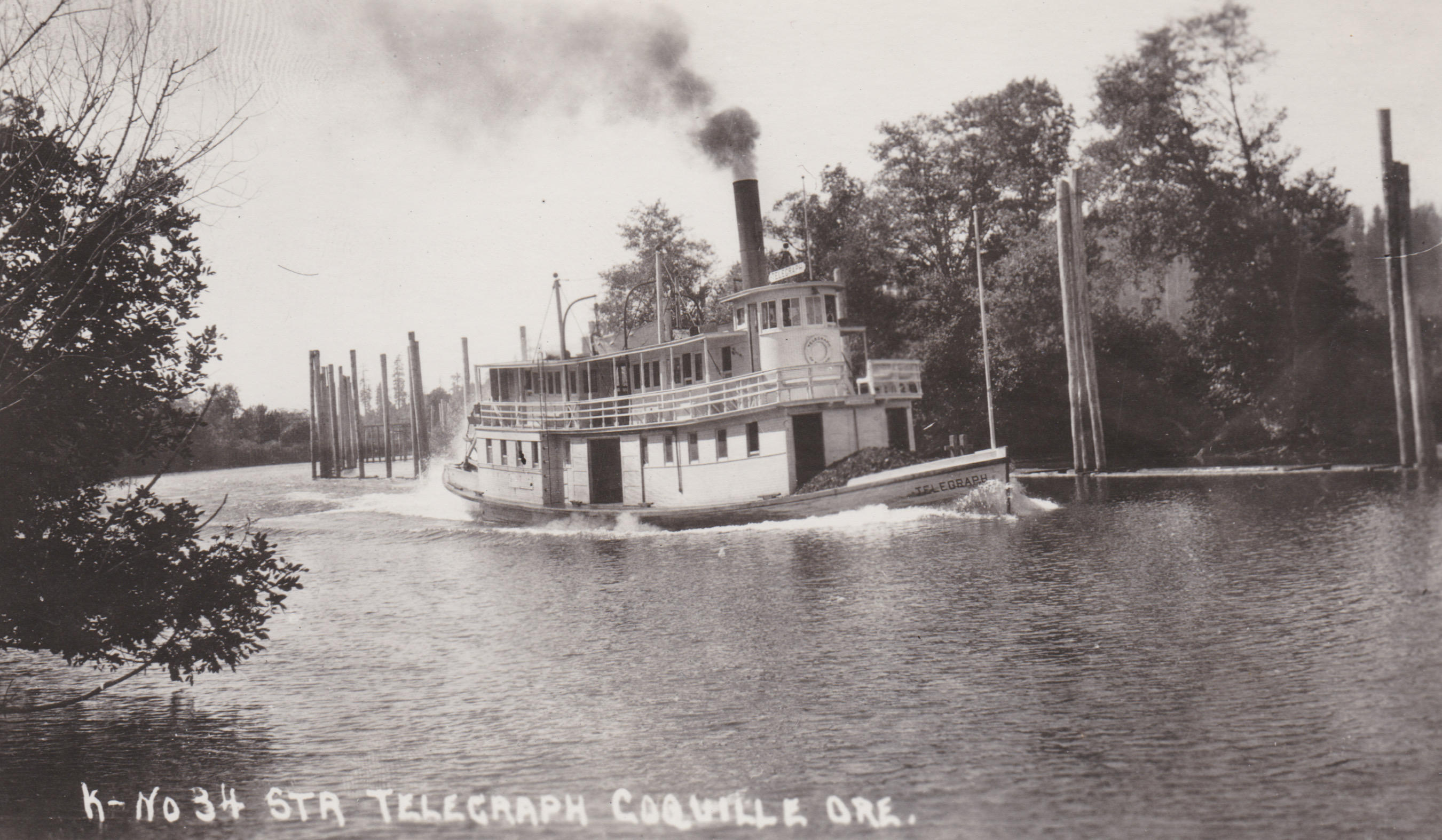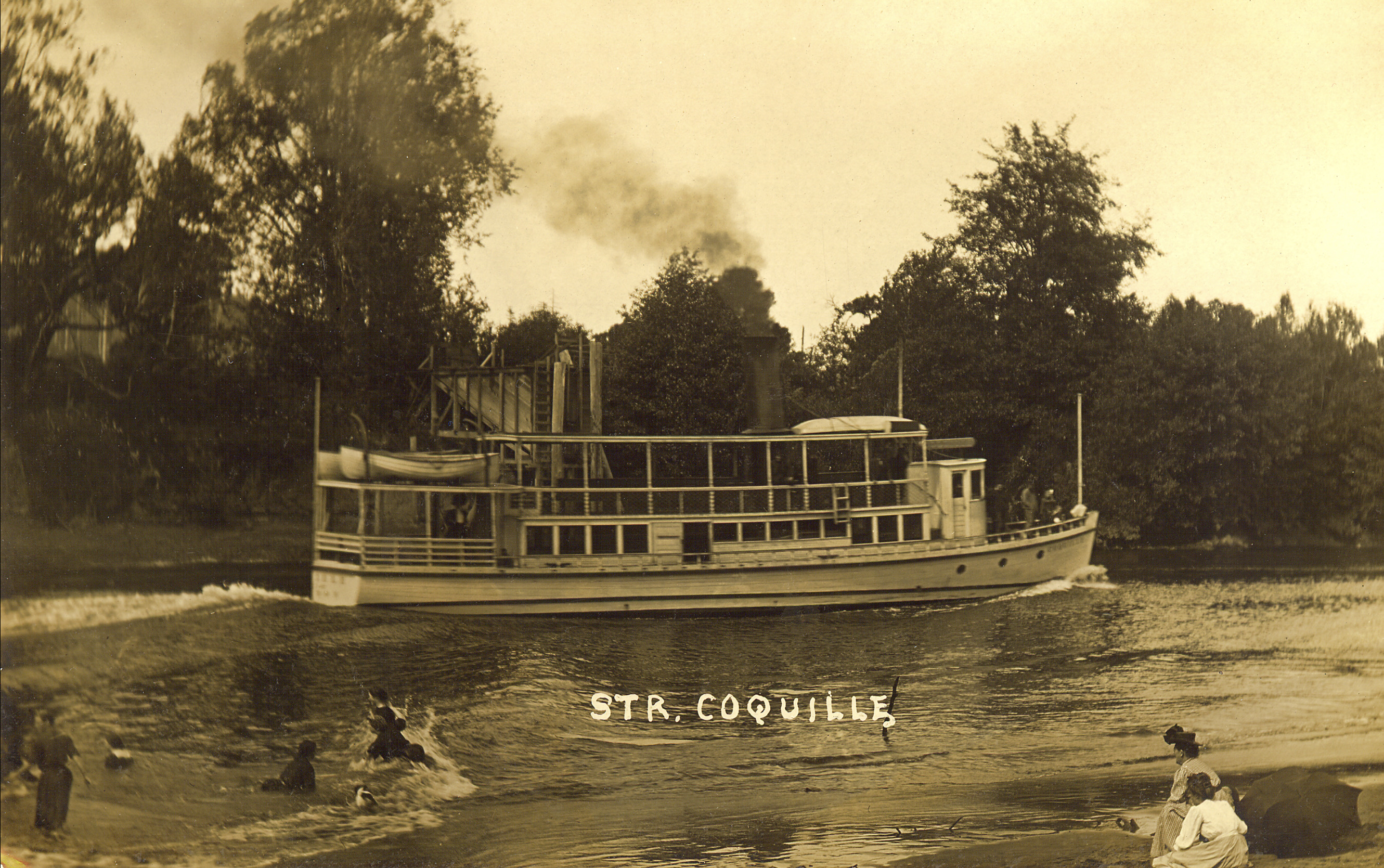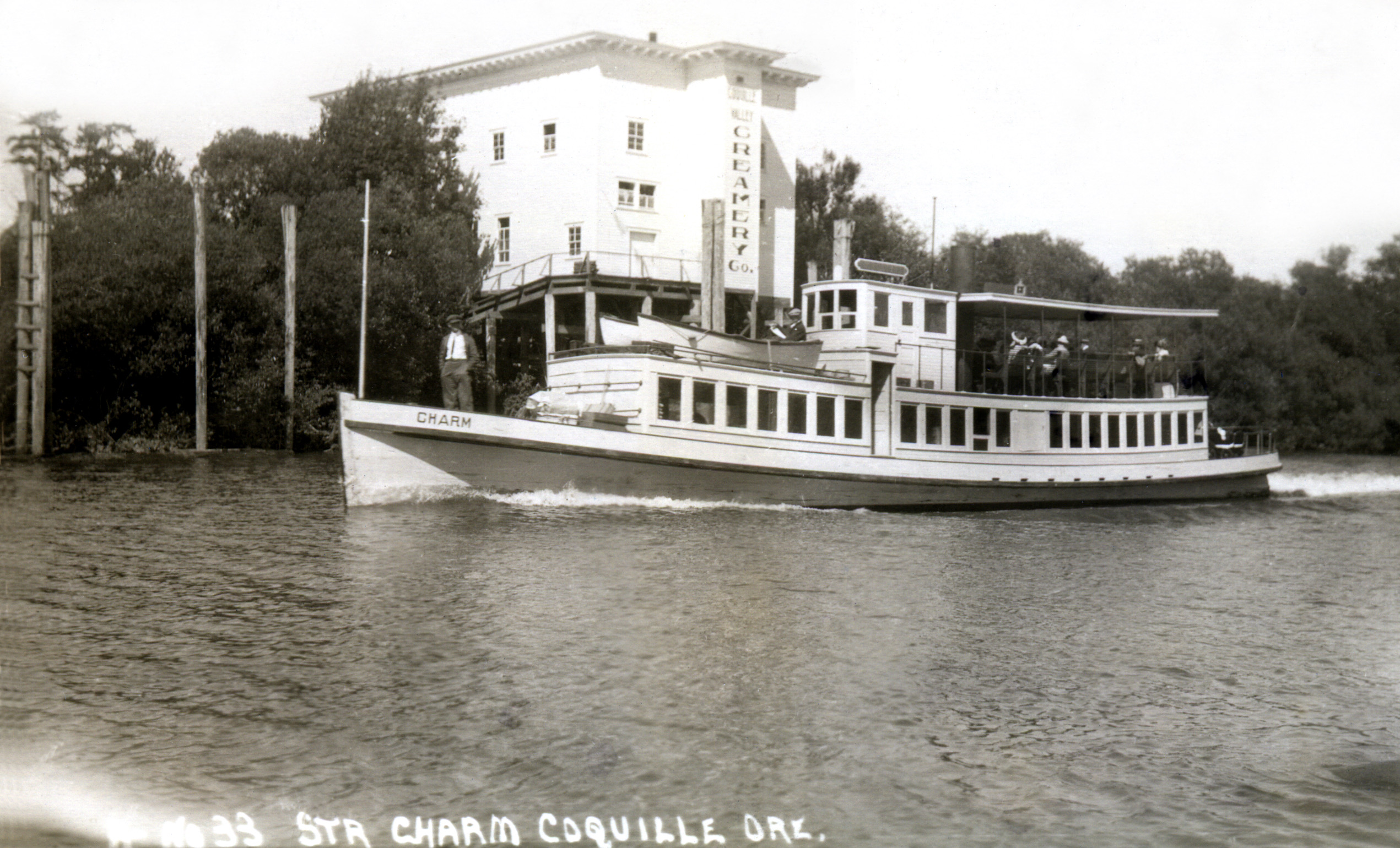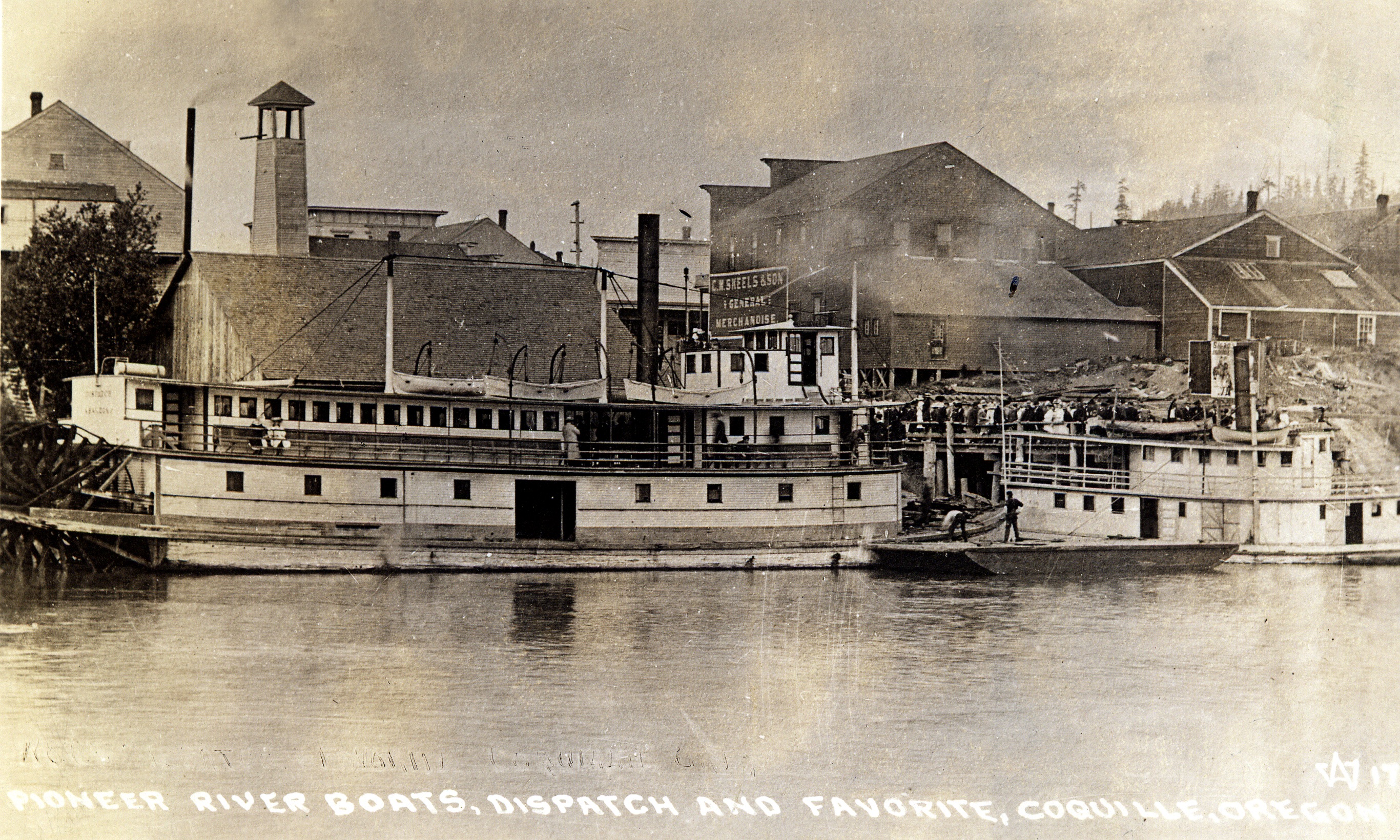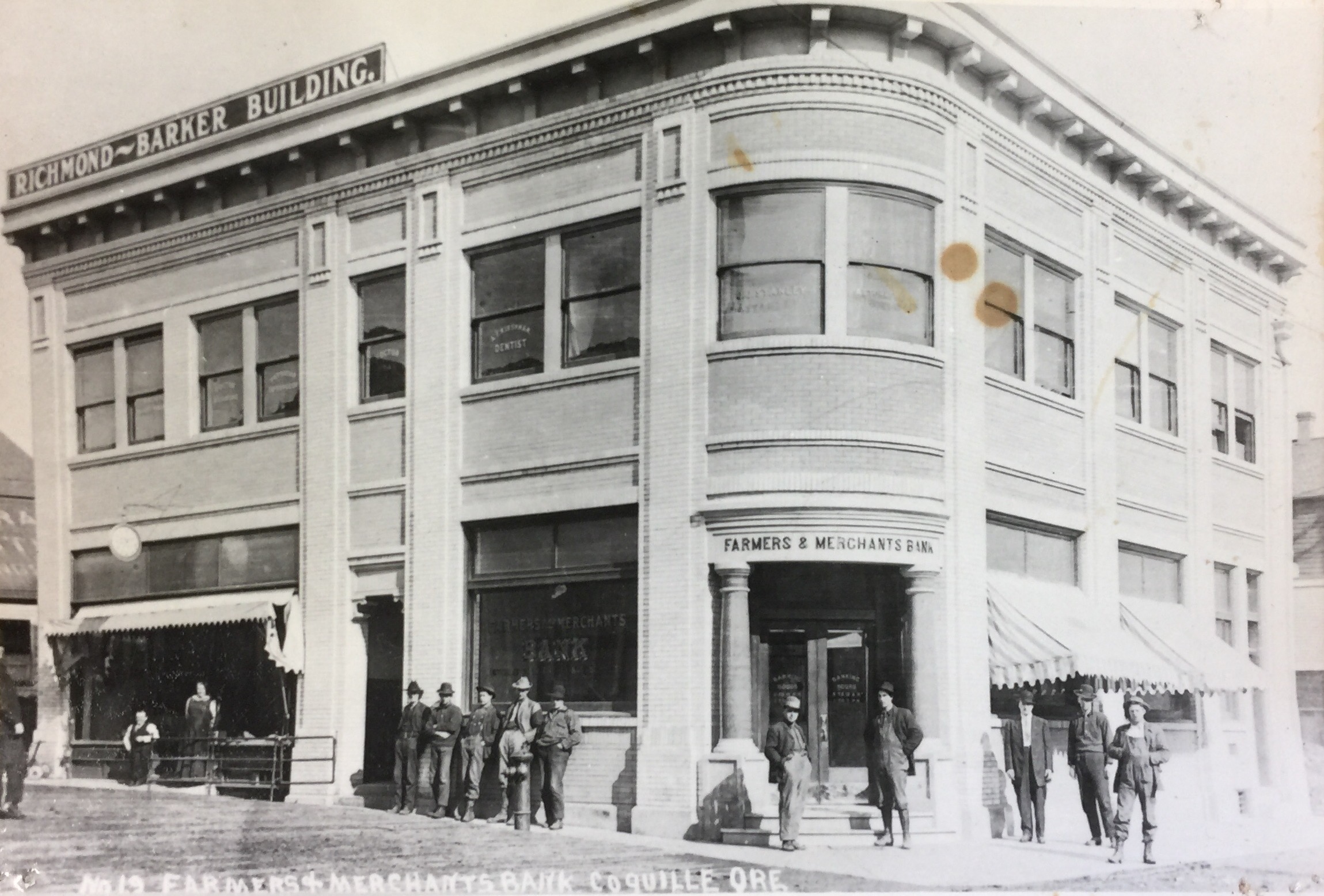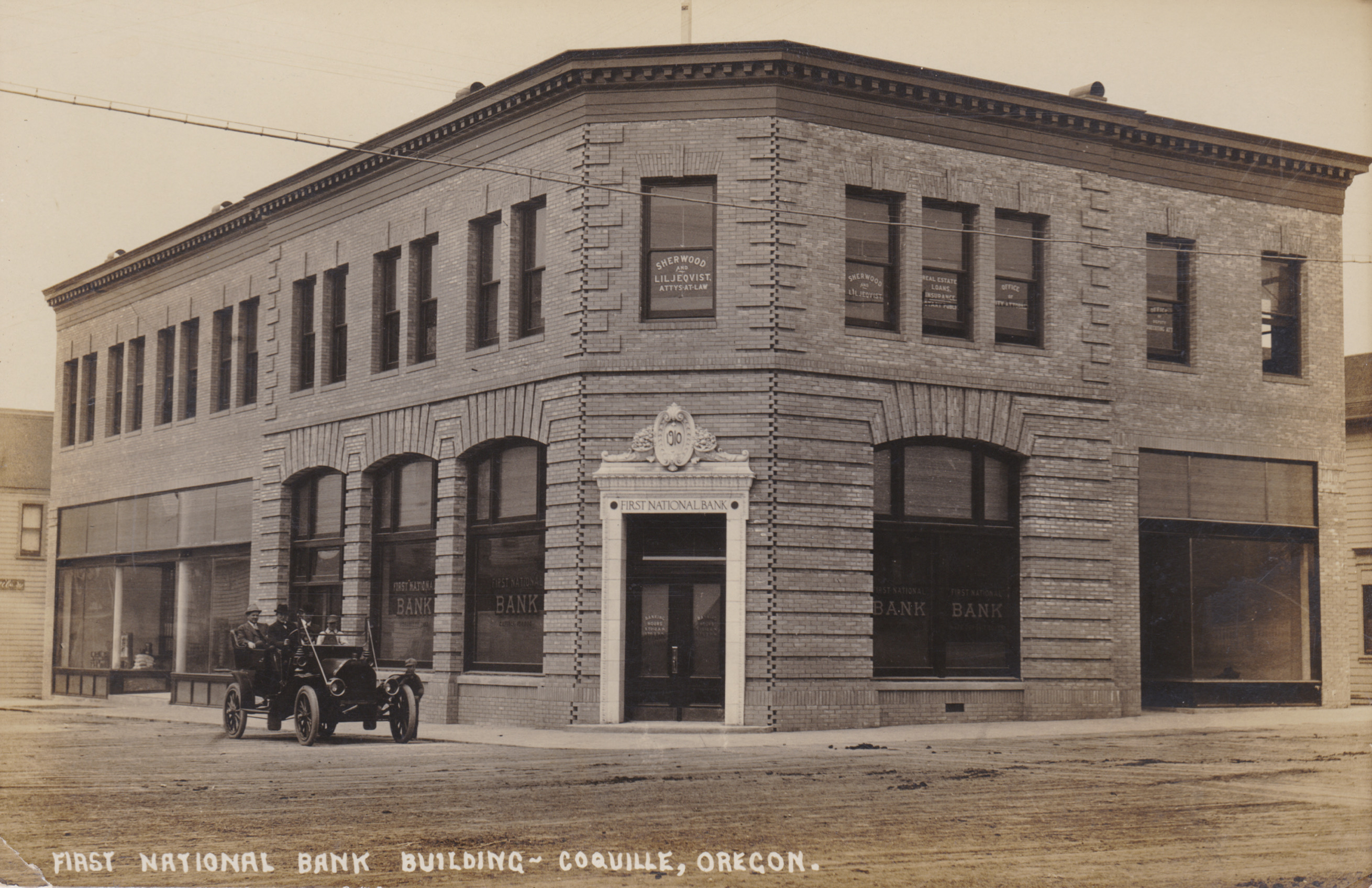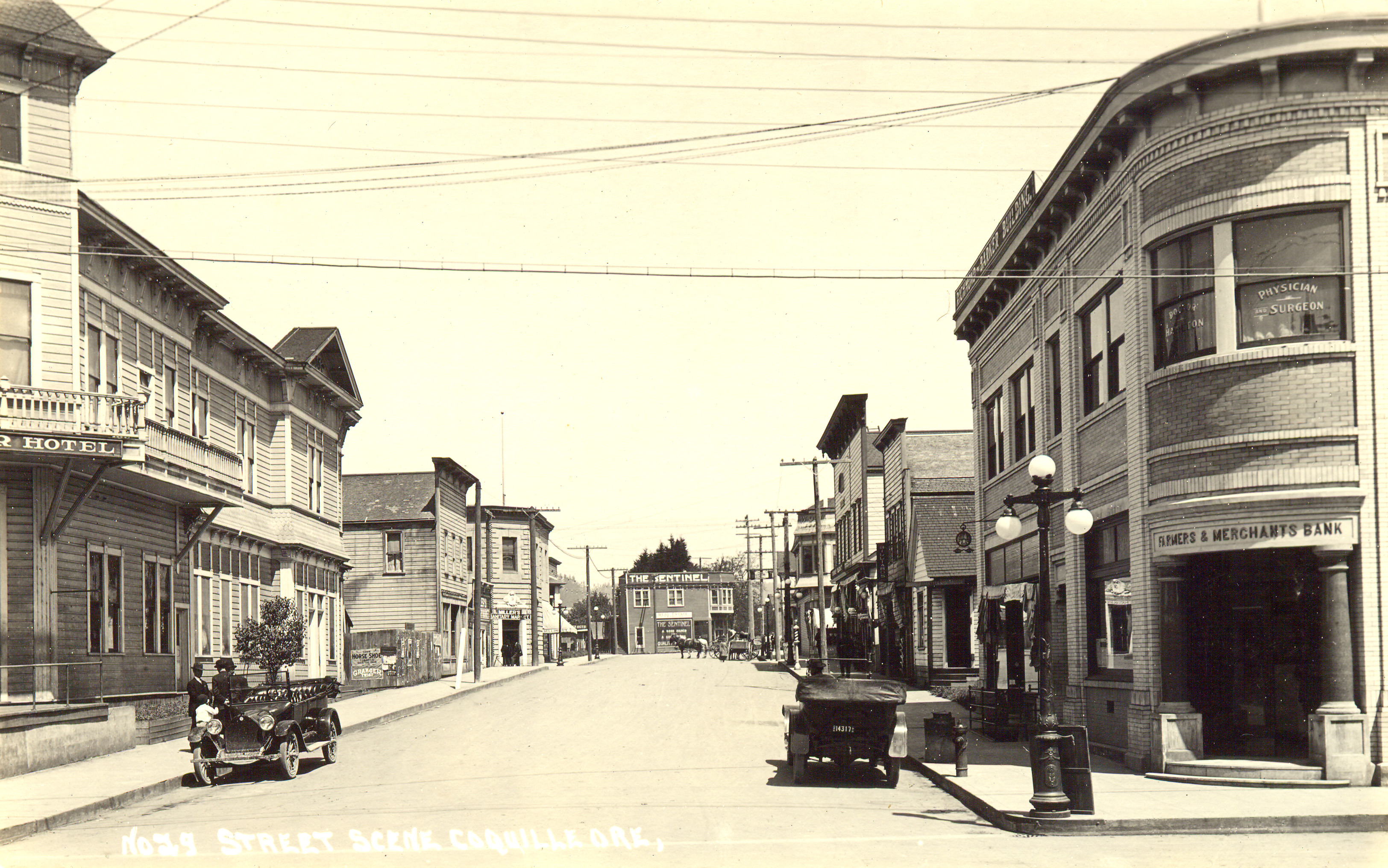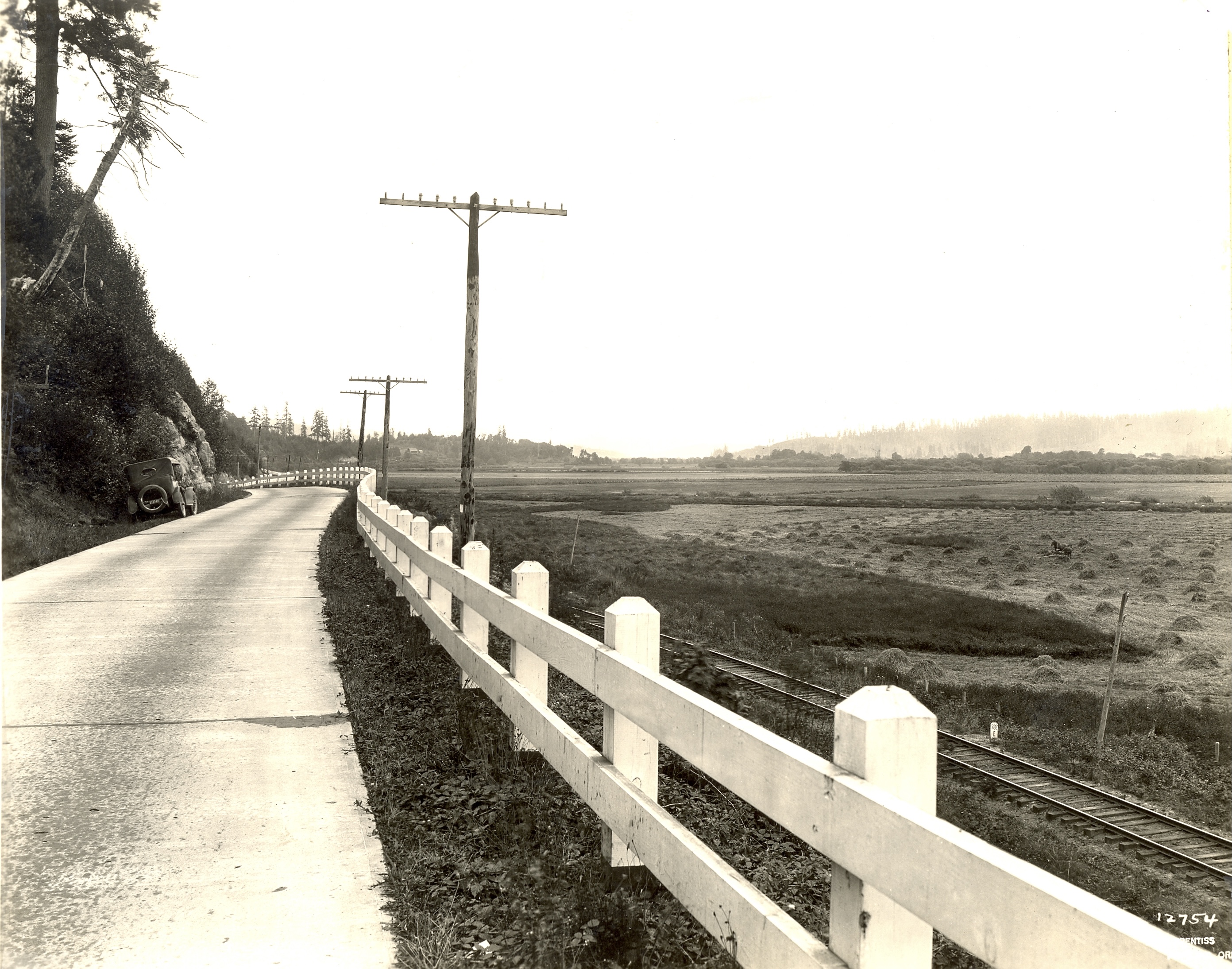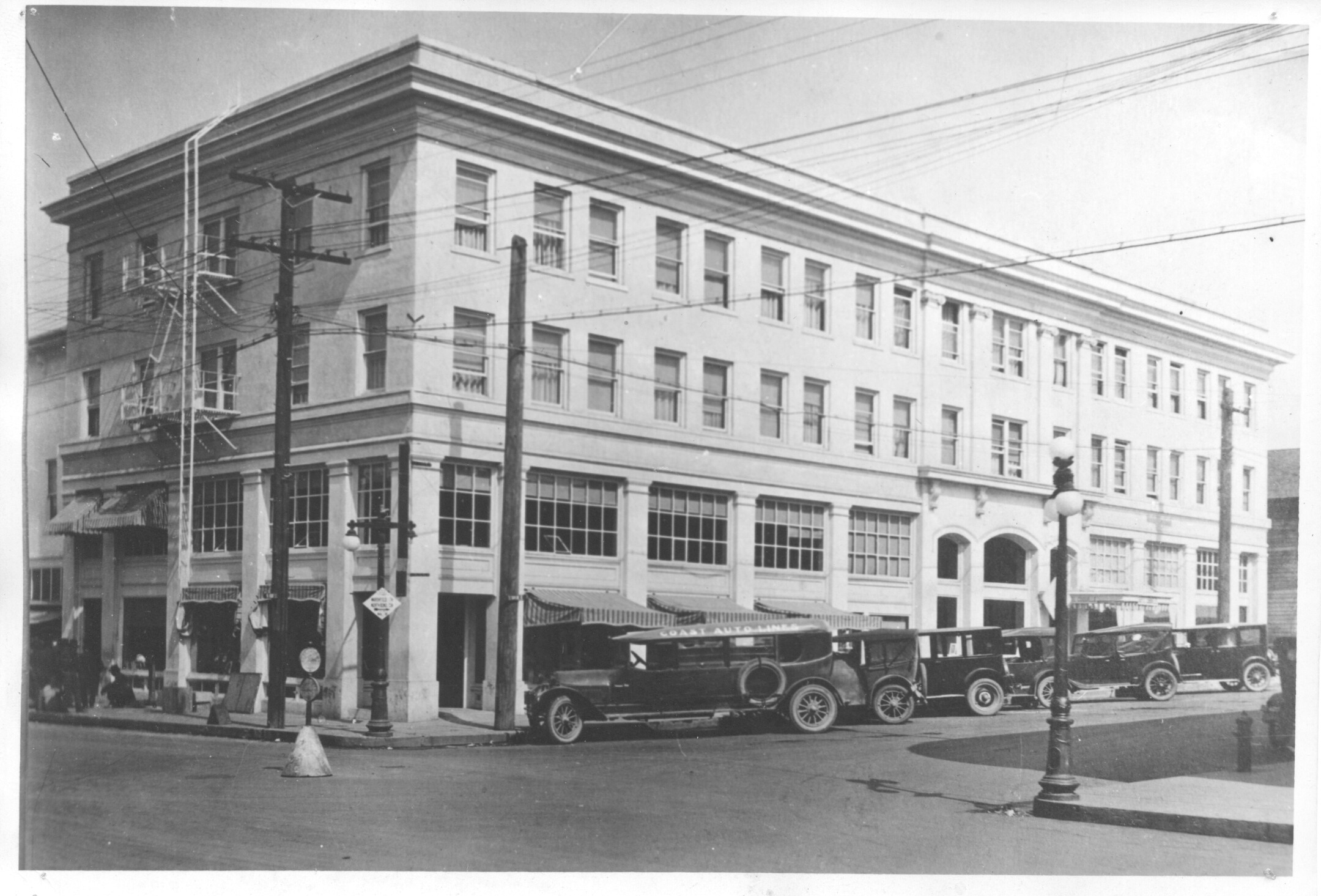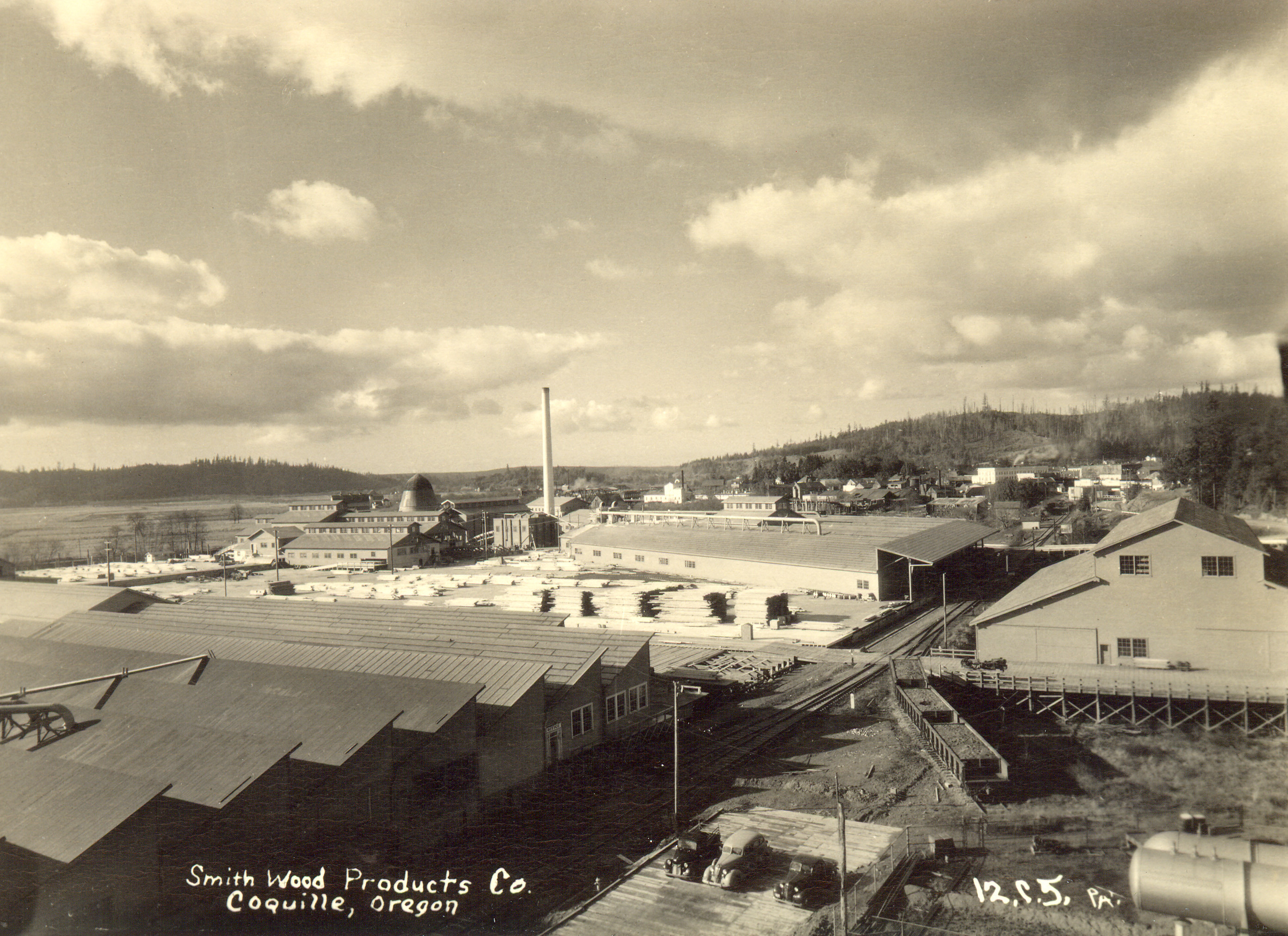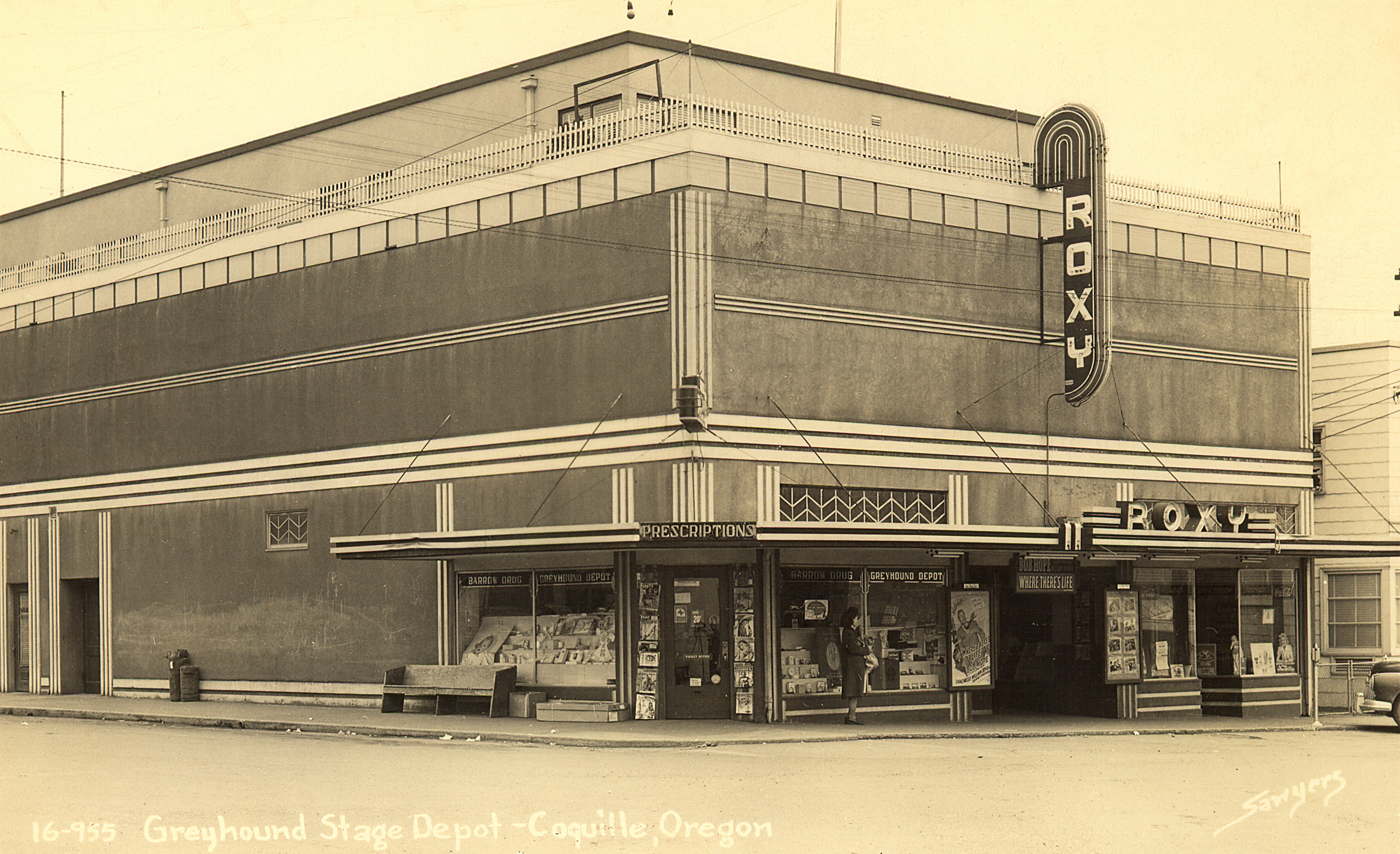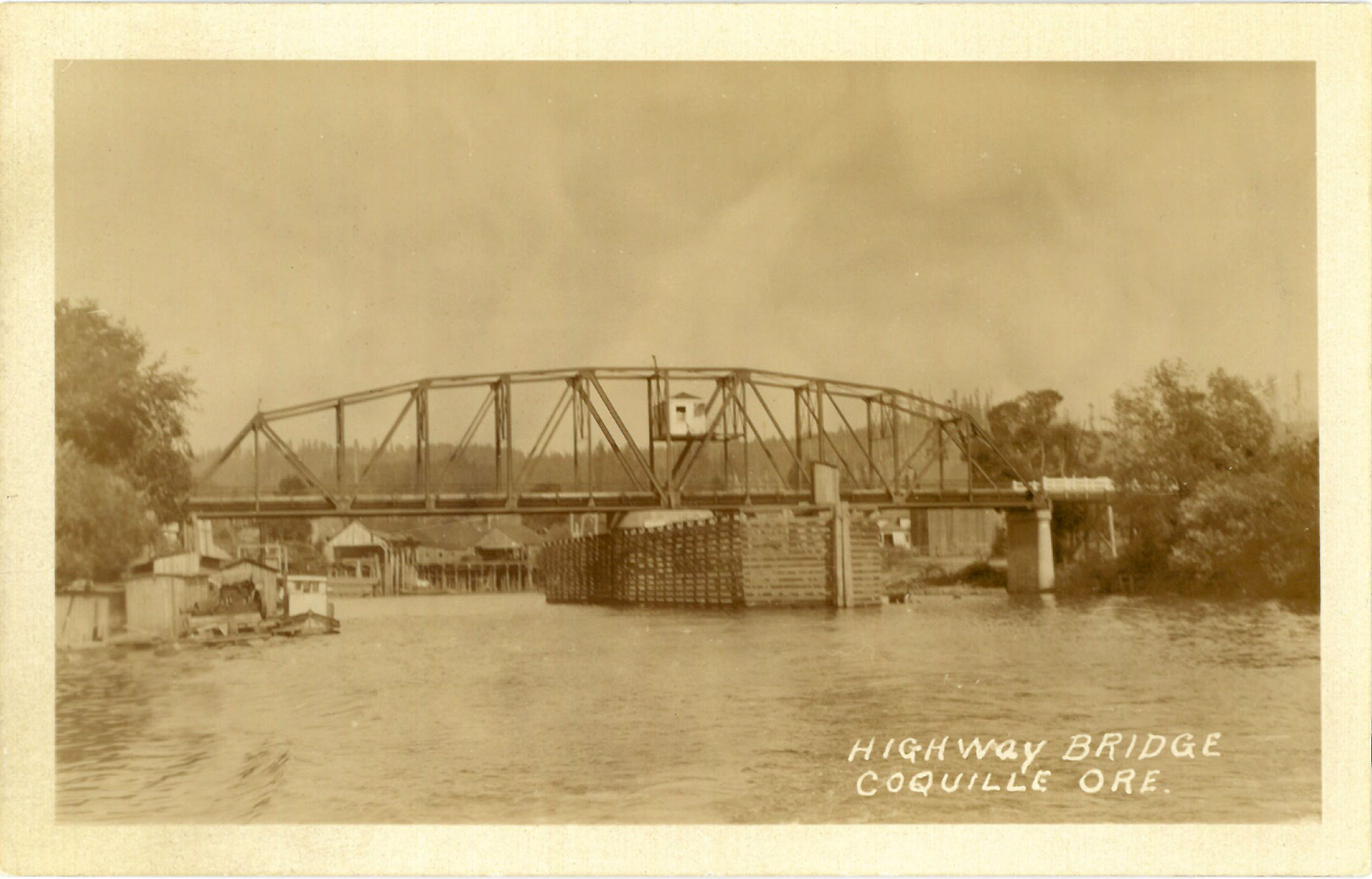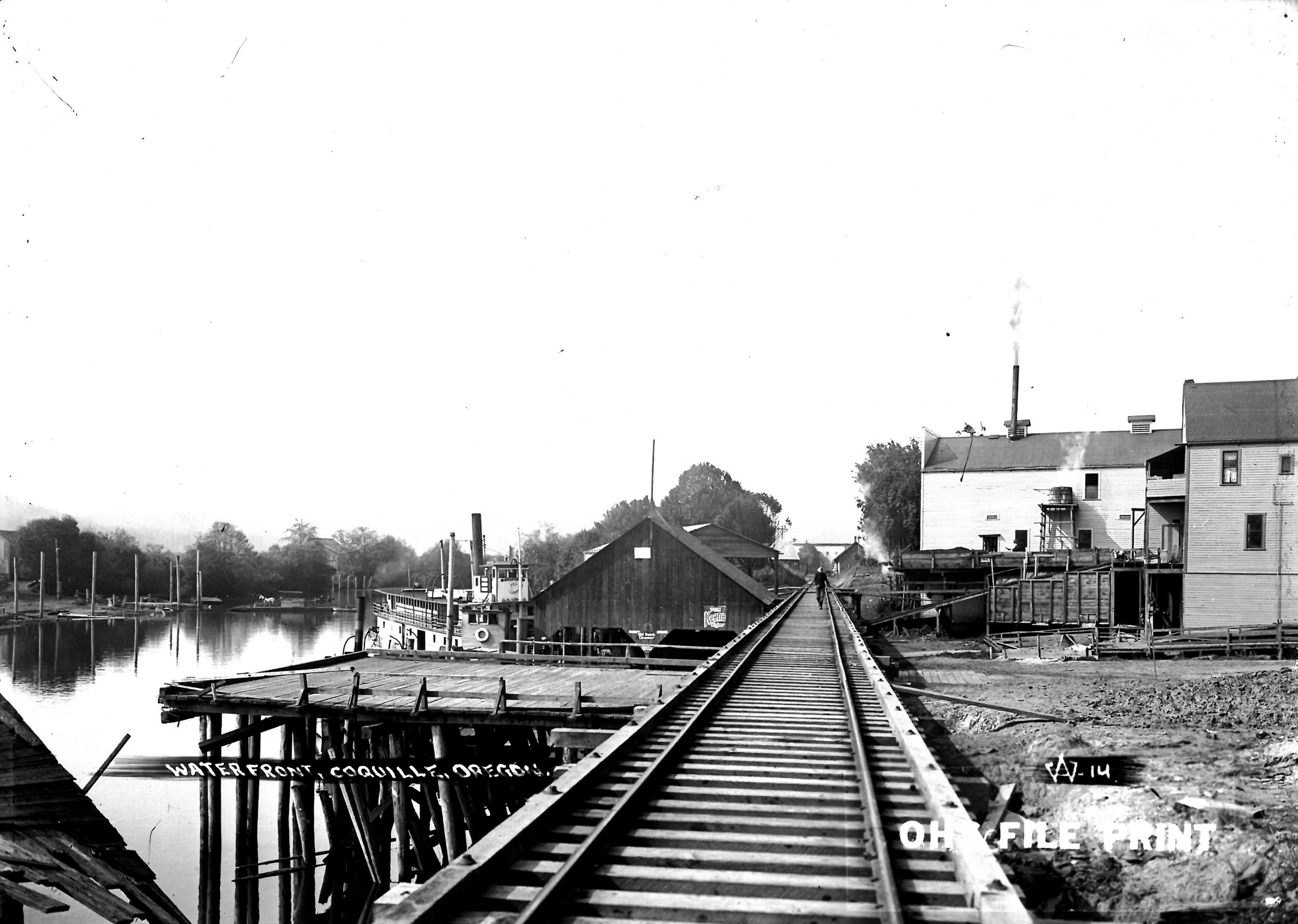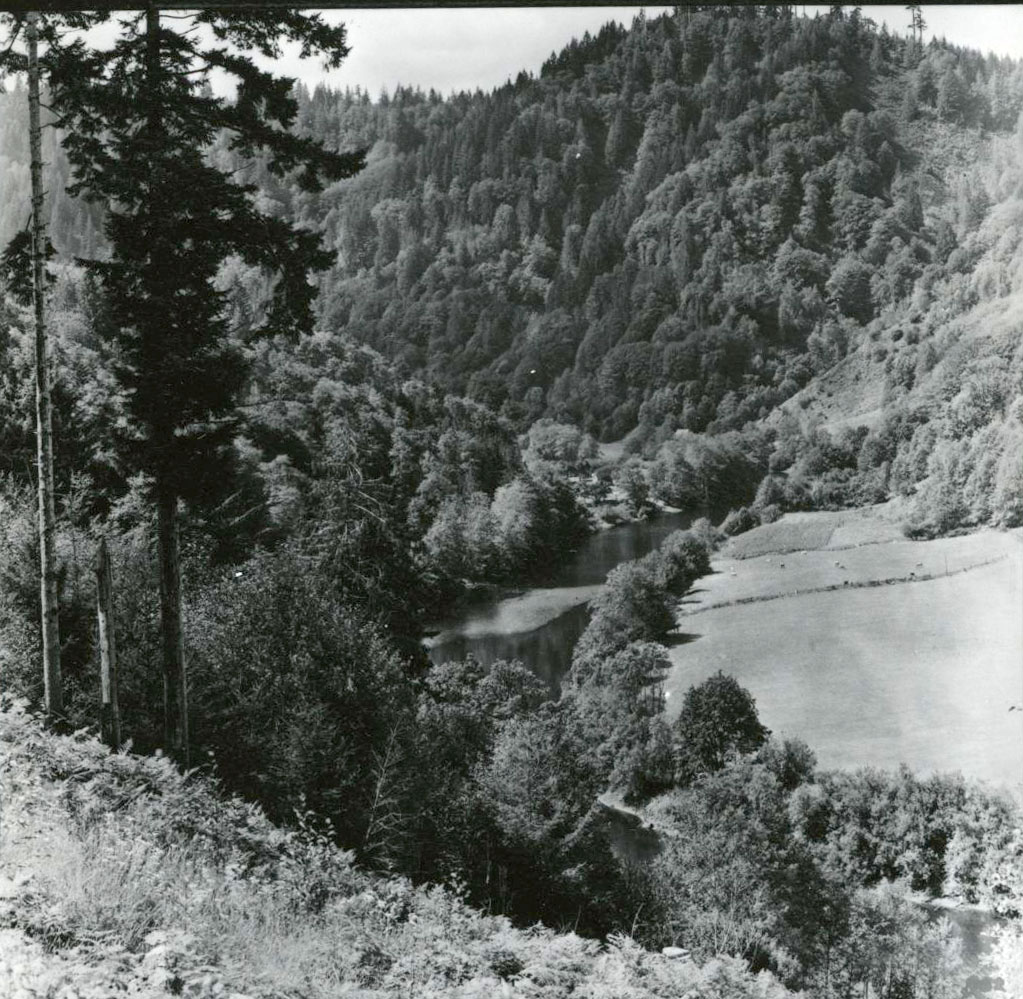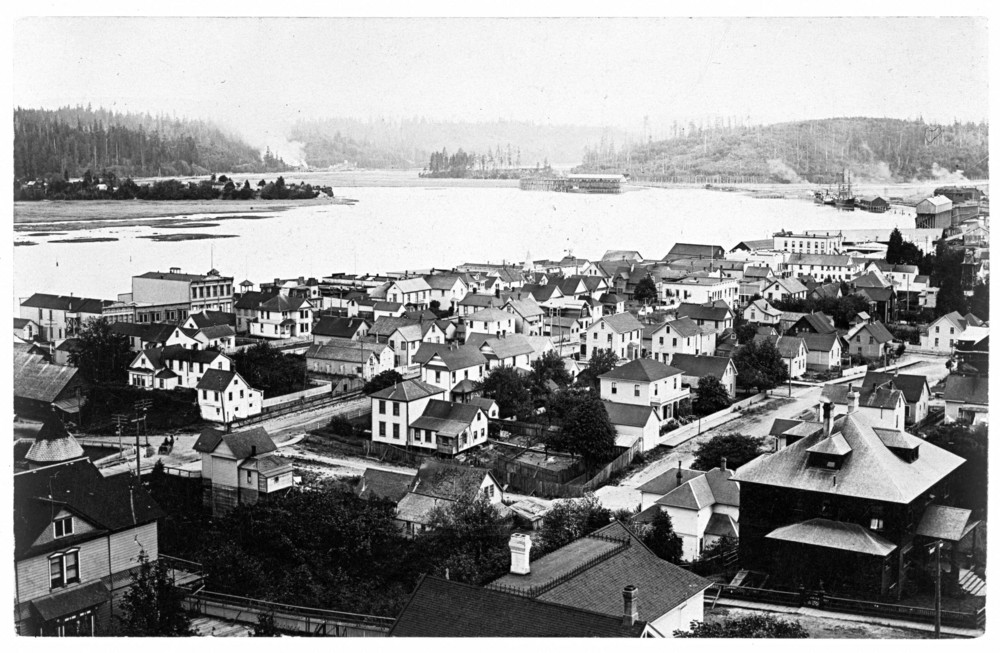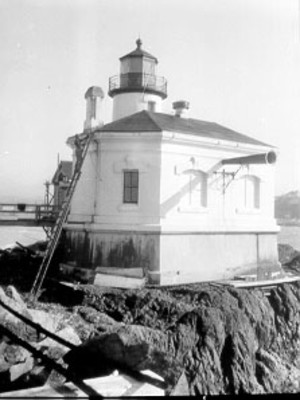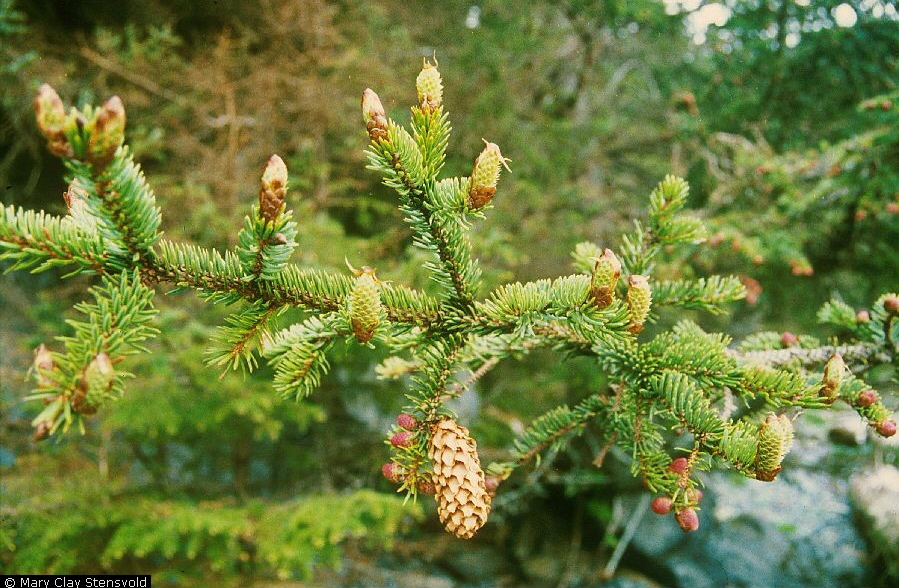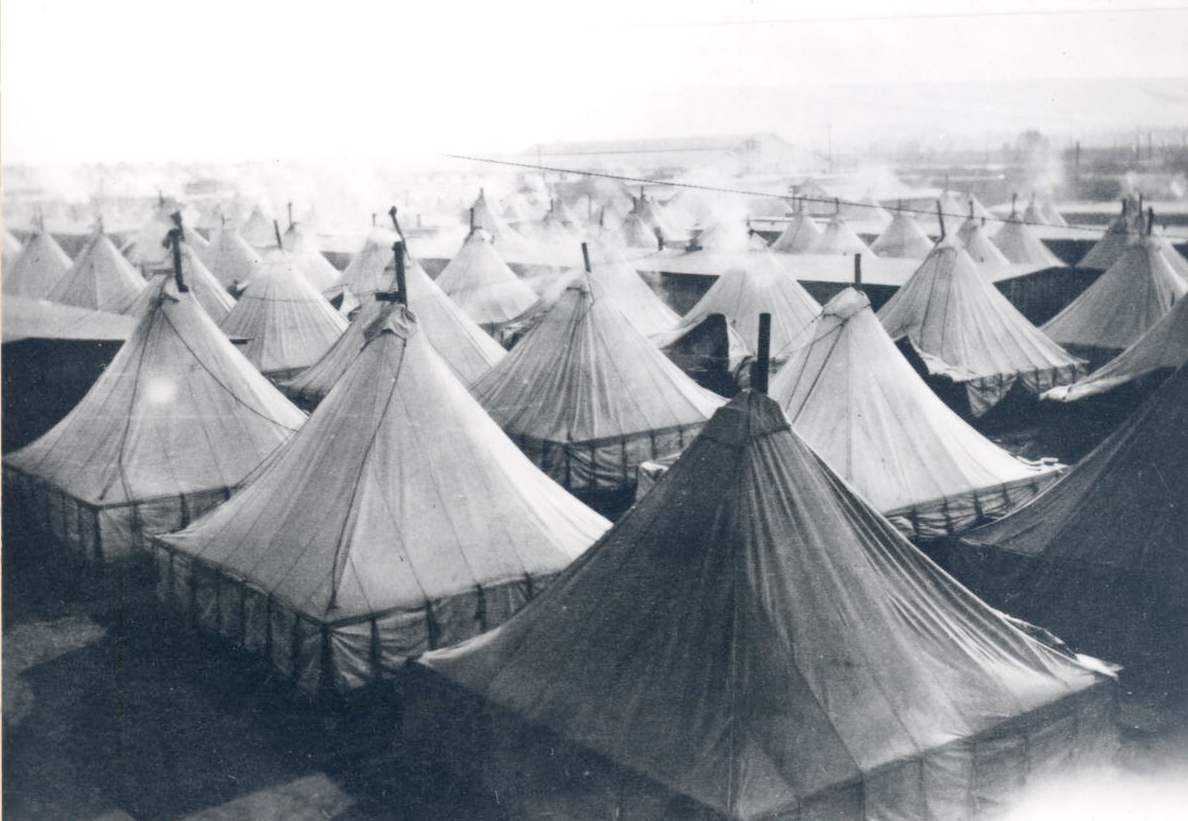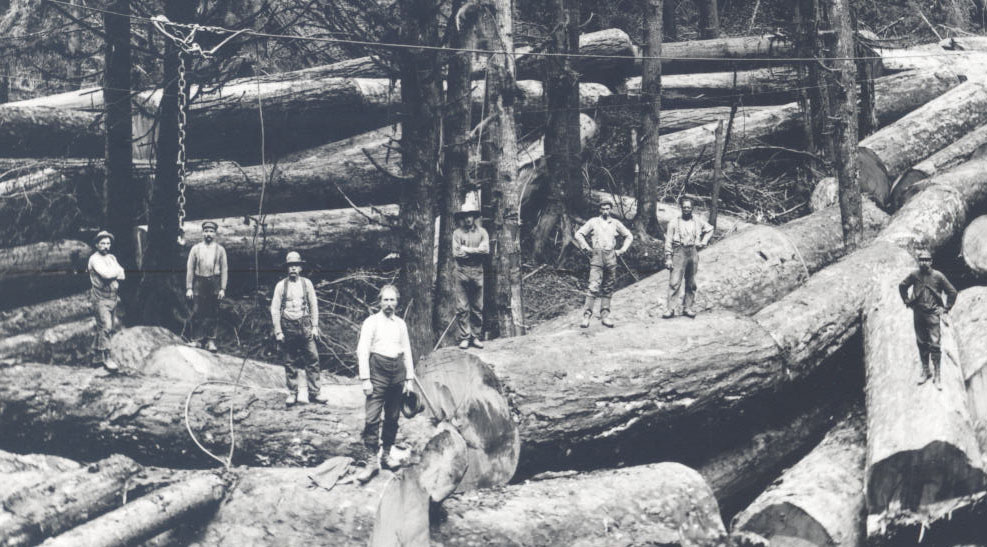The city of Coquille (pronounced ko-KEEL), a wood-products manufacturing community and the Coos County seat, is located in southwest Oregon about twenty-five miles up the Coquille River from the Oregon Coast. The town of about 3,900 people is situated on the bank of the river in a spacious inland valley. Coquille shares its name with the river and the Coquille Indian Tribe (pronounced ko-KWELL).
Several villages of the Upper Coquille people were located near the present-day city of Coquille prior to settlement by whites. The Tribe signed treaties in 1851 and 1855 and were moved to the reservation of the Confederated Tribes of the Siletz Indians. The first non-Native settler in the area was Evan Cunningham who served in the Coquille Guard, a local militia, in 1855, when tensions arose in the region during the Rogue River War. Coquille's downtown sits on a section of Cunningham’s land claim.
The Coquille River provided access to the fertile Coquille Valley and timbered Coast Range forests upriver as far as Myrtle Point. Coquille was established next to the river on high ground, and a post office was opened in 1870. Early enterprises in the area included wood and dairy products and coal. The first local sawmill, built by Bunch, Bennett & Co. in 1880, sat on the fledgling community’s waterfront. Ocean-going sailing ships were towed upriver to be loaded with lumber for San Francisco markets. The town of Coquille was incorporated in 1885.
Given the lack of wagon roads, the community relied on the river for transportation. Riverboats became a part of daily activity at Coquille, with larger boats going to Bandon and smaller boats to Myrtle Point. Most of the vessels, which carried both passengers and freight, were steam-powered sternwheelers burning wood or coal and were built on the river at several shipyards between the two towns.
A wagon road completed to Marshfield (now the town of Coos Bay) in 1886 provided improved access to the bay. In 1893, the Coos Bay Roseburg & Eastern Railroad & Navigation Co. completed a railroad from Marshfield to Myrtle Point, connecting the Coquille Valley to the deepwater seaport. With both river and rail transportation for freight and passengers, Coquille flourished. The railroad increased the transport of logs in the valley and to sawmills on Coos Bay.
With Coquille’s improved transportation facilities and central location, the city flourished, and the county seat was moved, by popular vote, from Empire to Coquille in 1896. A second sawmill was built by George, Mark, and Alfred Morras about two miles south of town in 1887. The mill was later sold to Alfred Johnson, but it burned in 1910. A third sawmill, built just west of town by the Coquille Lumber Company in 1911, would later become a Sitka spruce mill during World War I, providing wood for military aircraft.
With maturing riverboat service, several creameries were established on the river near Coquille to produce butter and cheese, making it necessary for riverboats to transport raw milk from local dairies to the creameries. The Coquille Creamery was located one mile south of town, the OK Creamery was on the downtown waterfront, and the Coquille Valley Creamery (later Swift & Co.) was just west of town.
Several small coal mines, including the Peart mine, were developed in the area to serve local markets for fuel and heating. A large mine operated at Beaver Hill several miles north of Coquille, and its output was delivered by rail to a large waterfront bunker in Marshfield for shipment to San Francisco.
In 1921, a paved road, part of the Coast Highway, was completed from Marshfield to Coquille. A bridge was built over the Coquille River at the city in 1922, and another section of the highway was completed in 1924 from Coquille to Bandon. The new roads and an expanded rail system from Myrtle Point to Powers provided improved connections to sources of timber and distant markets and supported expanded commerce with nearby communities.
Ralph Smith and George Ulett established the Smith Wood Products mill in 1929 to make battery separators from Port-Orford-cedar. The mill, which grew to produce plywood and other products, became the town’s largest employer and helped Coquille weather the Depression. The mill was purchased by Coos Bay Lumber in 1945 and Georgia Pacific in 1956. In 1952, Coquille Plywood started production, which continues today under Roseburg Forest Products.
With the strength of the wood products industry and two large mills, Coquille continued to thrive, even when the Coast Highway bypassed the city in 1960. Only after major reductions in private and federal timber harvesting and the closure of the Georgia Pacific mill in the 1980s did Coquille’s economic fortunes falter. The town now has a population of about four thousand people with an economy still based on timber. It is home to the Sawdust Theatre, the annual Gay Nineties celebration, and the Coquille Valley Museum.
-
![Note two riverboats, two sailing ships and a tug. The sailing ships were towed up the river from Bandon.]()
Coquille waterfront, c. 1900.
Note two riverboats, two sailing ships and a tug. The sailing ships were towed up the river from Bandon. Courtesy Coquille Valley Museum
-
Front Street in Coquille, looking east after paving in about 1915.
Courtesy Coquille Valley Museum, David Sell Collection
-
The Coos Bay Roseburg & Eastern Railroad & Navigation Co. completed a line from Marshfield to Coquille in 1893.
This was the second depot and was located just west of the downtown. Courtesy Coquille Valley Museum
-
The Beaver Hill coal mine was developed in the 1890’s seven miles north of Coquille.
The mine shipped coal to San Francisco. Courtesy Coquille Valley Museum, David Sell Collection
-
Coquille Hotel.
The first Coquille Hotel was built in 1896 after its predecessor and other buildings were destroyed in a major fire in the city and the arrival of the railroad. Courtesy Coquille Valley Museum
-
![This photo was taken from the steps of the Hotel Coquille. In 1910 the tracks were relocated to the waterfront.]()
Coos Bay Roseburg & Eastern Railroad & Navigation Co. train on Front Street c. 1900, Coquille.
This photo was taken from the steps of the Hotel Coquille. In 1910 the tracks were relocated to the waterfront. Courtesy Douglas County Museum
-
The Coos County Courthouse was completed in 1898 after the county seat was moved from Empire to Coquille.
Courtesy Coquille Valley Museum, David Sell Collection
-
Coquille Public School. The building was opened in 1899.
Courtesy Coquille Valley Museum, David Sell Collection
-
![]()
Front Street in Coquille looking east c. 1910.
Courtesy Coquille Valley Museum, David Sell Collection
-
![]()
The riverboat Dispatch, built in 1903, on the lower river between Coquille and Bandon.
Courtesy Coquille Valley Museum, David Sell Collection
-
![]()
The riverboat Telegraph, built in 1914, provided freight and passenger service between Coquille and Bandon.
Courtesy Coquille Valley Museum, David Sell Collection
-
![]()
The riverboat Coquille, built in Coquille in 1908.
Courtesy Coquille Valley Museum, David Sell Collection
-
![]()
The riverboat Charm, built in 1913, passing the Coquille Valley Creamery west of downtown.
Courtesy Coquille Valley Museum, David Sell Collection
-
Riverboats Dispatch and Favorite at the Coquille waterfront, c. 1910.
Courtesy Coquille Valley Museum
-
![The Richmond-Barker building was built in 1909.]()
The Richmond-Barker building, Coquille.
The Richmond-Barker building was built in 1909. Courtesy Coquille Valley Museum
-
![]()
Coquille First National Bank. The building was constructed in 1910.
Courtesy Coquille Valley Museum, David Sell Collection
-
Taylor Street, later Central Boulevard, looking north from Front Street in Coquille c. 1915.
Courtesy Coquille Valley Museum, David Sell Collection
-
![This section of the highway was concrete and 16 feet wide and completed in 1924.]()
A section of the Oregon Coast Highway, between Coquille and Marshfield.
This section of the highway was concrete and 16 feet wide and completed in 1924. Courtesy Oregon Department of Transportation
-
Hotel Coquille.
The second Hotel Coquille opened in 1924, shown here with a Coast Auto Lines stage. Courtesy Coquille Valley Museum, David Sell Collection
-
Smith Wood Products mill, Coquille, c. 1940.
The mill was Coquille’s largest employer and would later be purchased by Coos Bay Lumber Co. and Georgia Pacific. Courtesy Coquille Valley Museum, David Sell Collection
-
Roxy Theatre, Coquille, 1937.
The Roxy Theatre was built in 1937 and included commercial space at street level and two spacious apartments above. Courtesy Coquille Valley Museum, David Sell Collection
-
![]()
Coquille River Bridge (built in 1922).
Oregon Historical Society Research Library, ba012271, PF 283A
-
![]()
Dispatch boat, Coquille, Oregon.
Oregon Historical Society Research Library, ba012276, PF 283A
Related Entries
-
![Alsea Subagency of Siletz Reservation]()
Alsea Subagency of Siletz Reservation
In September 1859, Joel Palmer, the Superintendent of Indian Affairs fo…
-
![Coos Bay]()
Coos Bay
The Coos Bay estuary is a semi-enclosed, elongated series of sloughs an…
-
Coquille River Lighthouse
The Coquille River Lighthouse, which is adjacent to the Coquille River,…
-
![Sitka spruce]()
Sitka spruce
Sitka spruce (Picea sitchensis) is also known as the coast or tidewater…
-
![Spruce Production Division]()
Spruce Production Division
In 1918, during World War I, almost thirty thousand U.S. soldiers were …
-
![Timber Industry]()
Timber Industry
Since the 1880s, long before the mythical Paul Bunyan roamed the Northw…
Related Historical Records
Map This on the Oregon History WayFinder
The Oregon History Wayfinder is an interactive map that identifies significant places, people, and events in Oregon history.
Further Reading
Coquille Indian Tribe. "How Do You Pronounce That?"
Dunn, Bert, Andie Jensen, and Yvonne Cher Skye. Coquille (Images of America). Charleston, S.C: Arcadia Publishing, 2018.
Dodge, Orvil. Pioneer History of Coos and Curry Counties, Or. Salem, Ore.: Capital Printing Co., 1898.
Peterson, Emil R. and Alfred Powers. A Century of Coos and Curry History of Southwest Oregon. Coquille, Ore.: Binfords & Mort [for] Coos-Curry Pioneer and Historical Association, 1952.
Stone, Boyd. My Valley: History of the Coquille River Valley, Outlying Area and More. Coquille, Ore.: Boyd Stone, 2008.
Strain, Patti, and Hal Strain. The Coquille Valley, Volumes One and Two, 2009. (Unpublished, held by the Coos Bay Public Library.)
Taylor, Dorothy. The Voices of Coquille, 2020.



